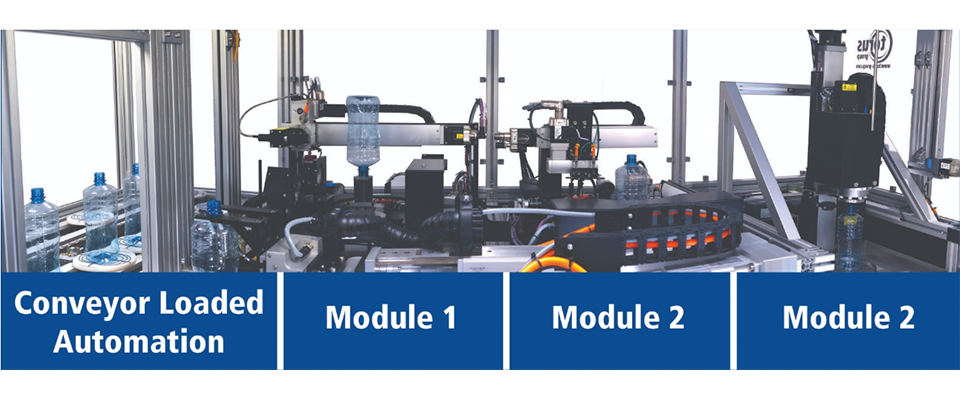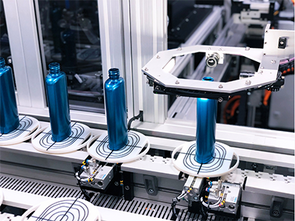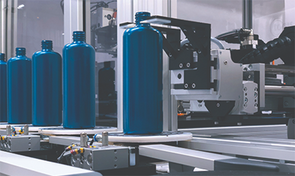The only requirement of the TQ-LAB is to place batches of containers onto a turnaround conveyor and select the relevant program. A bespoke vision-system locates the position of the neck and with little programming, an intelligent force feedback gripper and multi-axis pick and place system transfers the product from the conveyor to the first measurement module. Here non-contact thickness and dimension measurements can be taken. Once the first module measurements are complete, the gripper transfers the container into the second module where non-contact internal diameter measurements are taken using miniature white light confocal technology. Finally, top load, volume capacity & container weight are measured in the third station before a final transfer to dedicated pass or fail bins.
This multi-station concept offers customers unprecedented improvements to accuracy & repeatability, whilst reducing time & labour costs associated with common, manual quality control checks. The TQ-LAB can be supplied as a manually loaded or fully automated package. As with all the Torus range, measurements are fully traceable and certified to UKAS standards and come with CE certification. The gauge utilises Torus’ own powerful windows-based software GaugeXplorer, allowing customers to take control of their quality at a single control station.
Spencer Whale, Global Sales Manager for the plastic packaging division at Torus speaks about the new development, “The industry is ever evolving and the need for more consistent and reliable data to be provided in the most efficient manner is becoming a more regular demand. The future is certainly to streamline processes, including quality control. The development of the Torus TQ-LAB allows multi-module measurements to be carried out with minimum operator touch points. Large amounts of data can be sent automatically to the network for analysis. Automation of industry standard tests and the handling of big data provides the industry with a futuristic approach, advancing the proven methods that are already used all over the world today.”







